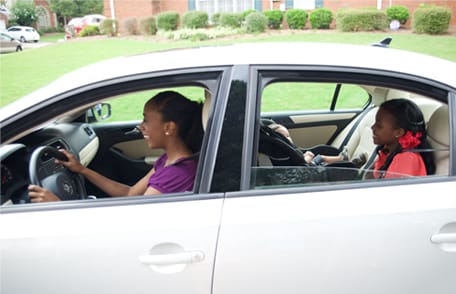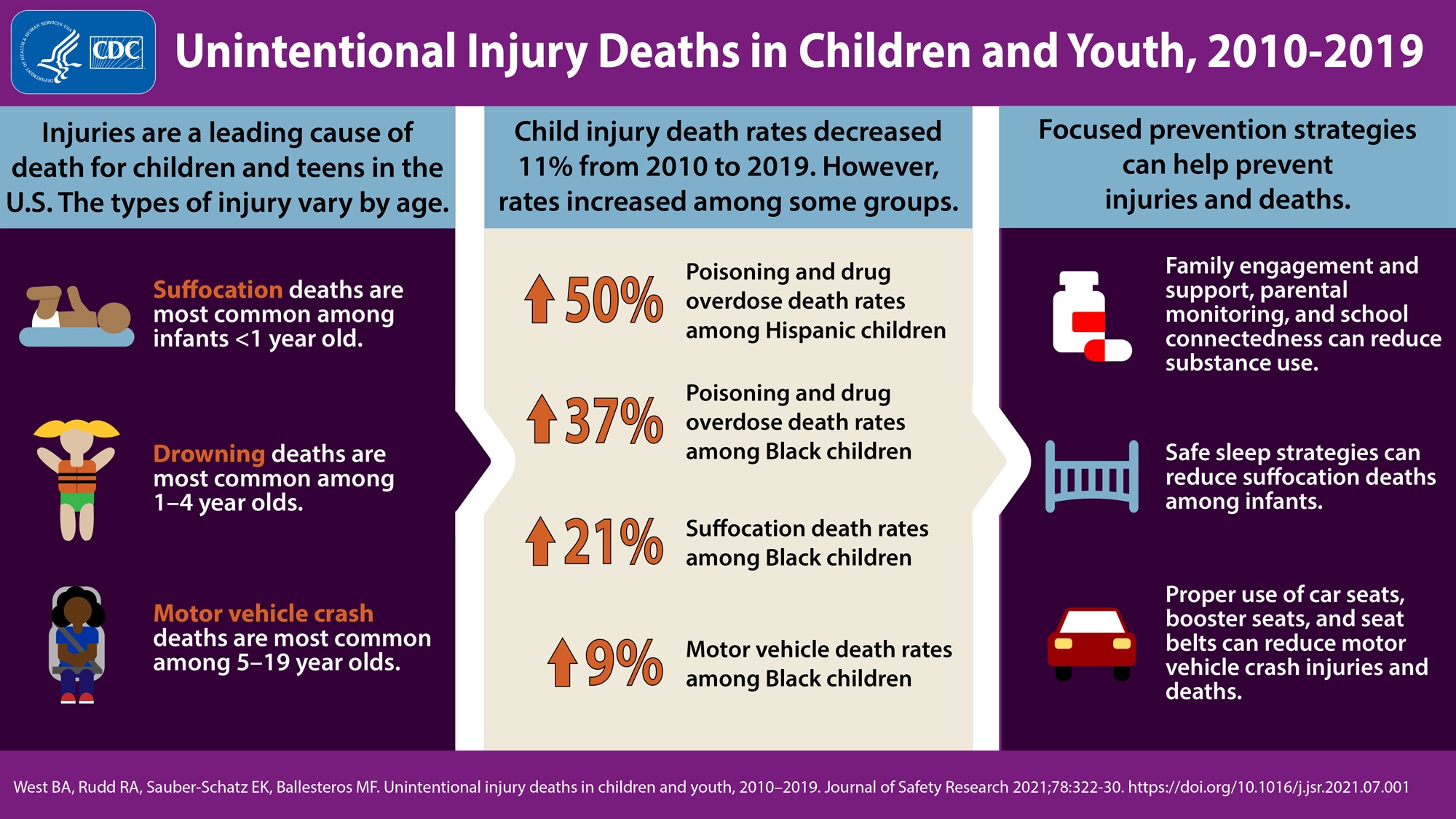Injuries Among Children and Teens

Child unintentional injury death rates decreased 11% from 2010 to 2019, but injury is still the leading cause of death for children and teens in the United States—and some are at higher risk.
More than 7,000 children and teens age 0-19 died because of unintentional injuries in 2019. That is about 20 deaths each day. Leading causes of child unintentional injury include motor vehicle crashes, suffocation, drowning, poisoning, fires, and falls. Child injury is often preventable.
In 2018–2019, child unintentional injury death rates were highest among:
- Male children
- Babies under 1 year old and teens age 15–19 years
- American Indian and Alaska Native children and Black children
Motor vehicle crashes caused more deaths than other causes of unintentional injury.
Overall unintentional injury death rates in rural areas were higher than metro and urban areas.
Despite overall decreases in child unintentional injury death rates from 2010 to 2019, rates increased among some groups:
- Suffocation death rates increased 20% among infants overall and 21% among Black children
- Motor vehicle death rates among Black children increased 9% while rates among White children decreased 24%
- Poisoning death rates increased 50% among Hispanic children and 37% among Black children, while rates among White children decreased by 24%
Drowning was the leading cause of injury death for children age 1-4 years. Drowning death rates were 2.6 times higher among Black children age 5–9 years and 3.6 times higher among Black children age 10–14 years, when compared with White children of the same age.
CDC conducts research to better understand these disparities and puts science into action to improve health equity. As an example of this work, CDC is working with partners to identify barriers to participation in basic swimming and water-safety skills training among youth who are at higher risk of drowning due to racial and ethnic disparities.
You can read more about these important findings in two recent CDC articles:
Everyone—including parents, health care providers, teachers, and neighbors—can take steps to prevent injury where children live, learn, and play. Visit the pages below to learn how you can help prevent child injuries and save lives.
| flame solid icon | Burns | water solid icon | Drowning | running solid icon | Falls |
| car side solid icon | Motor Vehicle Crashes | pills icon | Poisoning & Drug Overdose | baby icon | Suffocation |
Also, injuries like falls and motor vehicle crashes can cause concussions in children and teens. A concussion is a type of traumatic brain injury—or TBI—caused by a bump, blow, or jolt to the head or by a hit to the body that causes the head and brain to move rapidly back and forth.
Learn more from CDC HEADS UP about how you can help recognize and respond if you think your child has a concussion.
